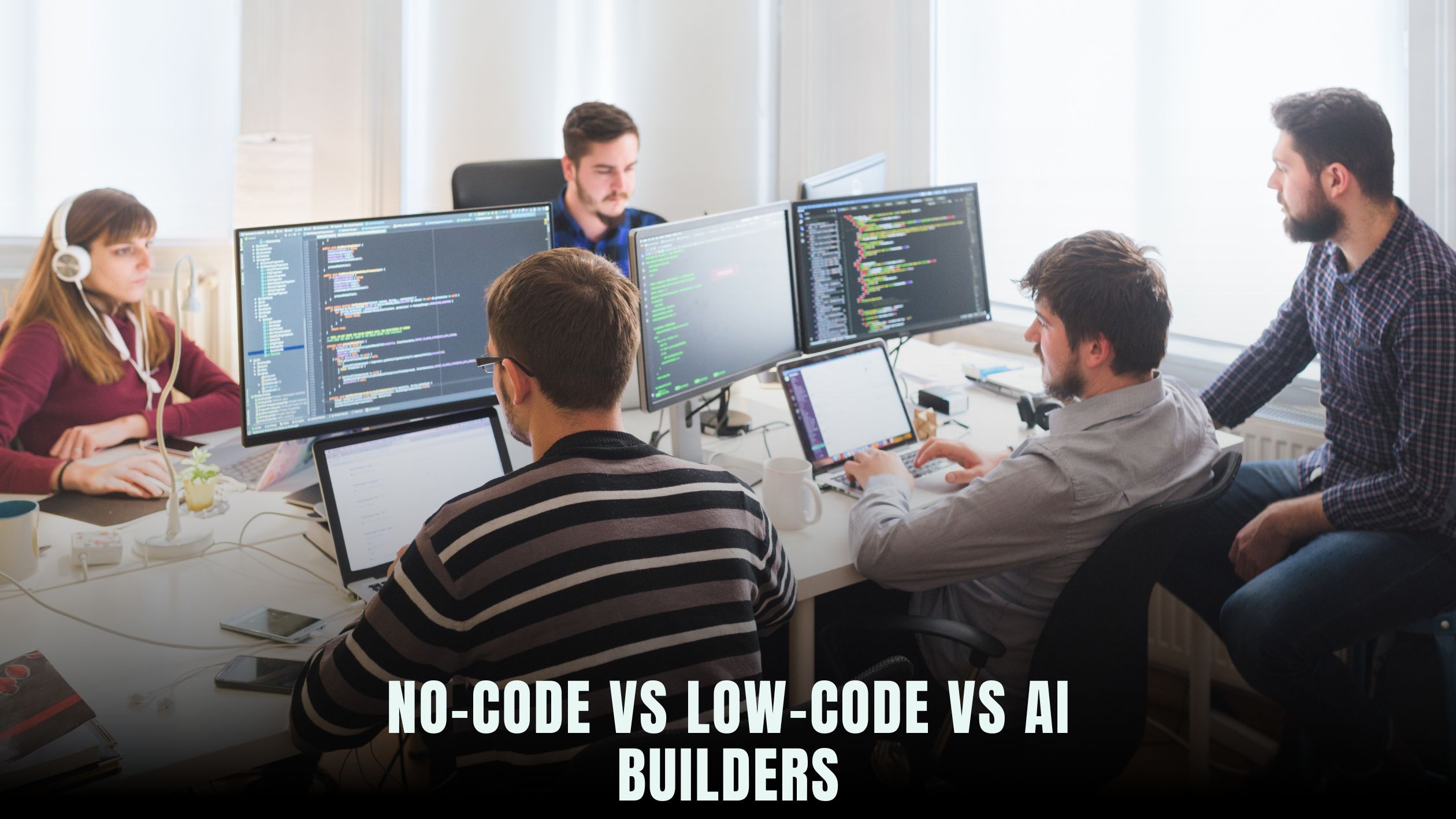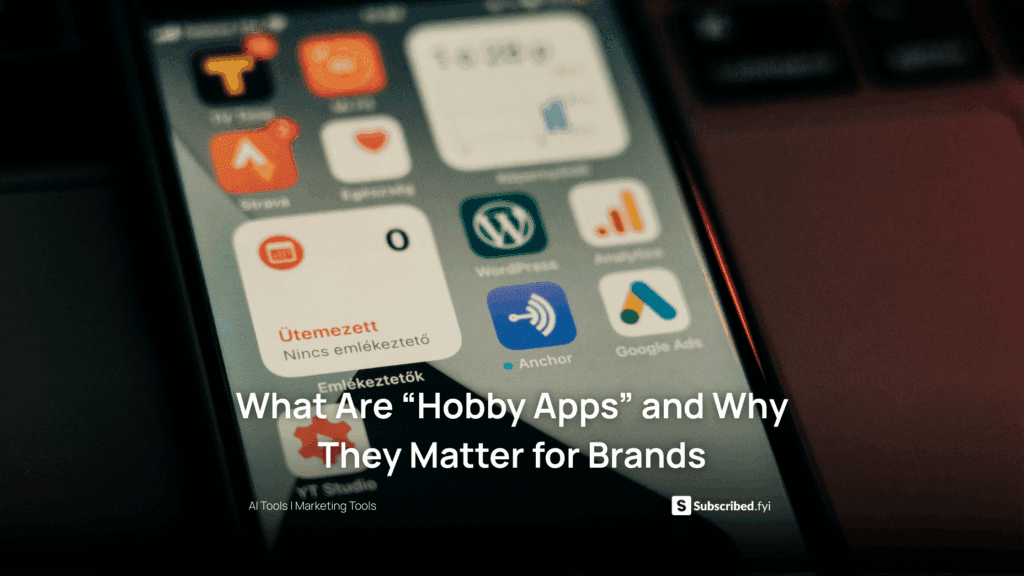No-Code vs Low-Code vs AI Builders: Which Is Right for You?
- Website Builder E-Learning Platforms Worksuite


Get the Right Builder for Your Project
Deciding between No‑Code vs Low‑Code vs AI Builders can feel like choosing a path in a maze—each promises speed, but they vary in flexibility and support. In this article, No‑Code vs Low‑Code vs AI Builders: Which Is Right for You?, we’ll break down what each approach means, highlight key tools, and share real‑world tradeoffs. You’ll learn which builder suits your skill level, project complexity, and budget so you can launch without regrets.
Choosing the right platform for building your next web project can feel overwhelming. Whether you’re exploring no-code tools like Bubble and Webflow, comparing low-code platforms such as Mendix or OutSystems, or testing AI-driven builders through Subscribed.fyi’s AI-powered website builders list, you have more options than ever. One standout solution is Hostinger Horizons, which pairs an AI chat interface with real-time sandbox deployment, bundled hosting, domains, SSL, and 24/7 expert support in a single plan.
To make an informed decision, you can compare key features side by side on Subscribed.fyi Compare. This guide walks you through the definitions, strengths, and weaknesses of no-code, low-code, and AI builders—helping you match your technical skill level, project needs, and budget to the right platform. By the end, you’ll know which approach fits your goals and how solutions like Hostinger Horizons can accelerate your launch while minimizing complexity.
The Rise of Visual Development Platforms
What Is No-Code?
No-code platforms let you build functional applications using visual interfaces and pre-built components—no programming required. Drag-and-drop editors, ready-made templates, and plugin marketplaces handle the heavy lifting. Common no-code tools include:
-
Bubble: A general-purpose app builder with a robust plugin ecosystem.
-
Webflow: A design-first tool that exports clean HTML and CSS.
-
Wix and Squarespace: Website-oriented builders with eCommerce and marketing integrations.
No-code is ideal for solopreneurs, marketers, and small teams who need to launch quickly without hiring developers.
What Is Low-Code?
Low-code platforms cater to users with some technical background. They provide visual development environments but also allow code extensions for custom logic. Popular low-code solutions:
-
Mendix: Focuses on enterprise-grade applications with strong collaboration features.
-
OutSystems: Offers high scalability, security, and integration with legacy systems.
-
Microsoft Power Apps: Integrates seamlessly with Microsoft 365 and Azure.
Low-code is a good match for IT departments and citizen developers who want faster builds with the option to dive into code when needed.
What Is an AI Builder?
AI builders use machine learning to automate design, content creation, and even code generation. You typically interact via chat prompts or by uploading mockups. Examples include:
-
Hostinger Horizons: AI chat-driven full-stack builder with hosting and support.
-
Fine AI: Natural language prompts create frontend components and style guides.
-
Tempo: Converts wireframes into working apps.
AI builders excel at rapid prototyping and creative iterations—perfect for founders and designers who want an intuitive, conversational approach.
Core Differences Between No-Code, Low-Code, and AI Builders
Ease of Use
-
No-Code: Very user-friendly. Visual editors and predefined workflows guide you through building pages, databases, and logic.
-
Low-Code: Offers visual tools but expects some coding knowledge for customizations and integrations.
-
AI Builders: Natural language prompts simplify interactions, though learning to craft effective prompts can require experimentation.
Customization and Flexibility
-
No-Code: Templates and plugins cover most use cases, but deep custom logic may be challenging without workarounds.
-
Low-Code: Code hooks allow unlimited customization—ideal for complex business applications.
-
AI Builders: Can generate custom components on demand, though output quality depends on prompt clarity and AI training datasets.
Learning Curve and Technical Skills
-
No-Code: Low barrier. Non-technical users can build simple apps in hours.
-
Low-Code: Moderate barrier. Familiarity with programming concepts helps you extend functionality.
-
AI Builders: Low to moderate barrier. You need to learn prompt best practices and understand how AI translates prompts into code.
Pros and Cons of Each Approach
No-Code Pros and Cons
Pros
-
Fast MVP launches
-
Minimal technical skills required
-
Rich plugin ecosystems
Cons
-
Limited custom logic
-
Vendor lock-in on proprietary platforms
-
Performance constraints for complex apps
Low-Code Pros and Cons
Pros
-
Greater flexibility with code extensions
-
Scalable enterprise features
-
Strong collaboration tools
Cons
-
Requires some development expertise
-
Higher licensing costs
-
Steeper learning curve for non-developers
AI Builders Pros and Cons
Pros
-
Rapid prototyping via natural language
-
Automatic code generation and design patterns
-
Built-in hosting and infrastructure
Cons
-
Output may need manual refinement
-
Potential security and compliance concerns if not vetted
-
Dependence on AI accuracy and training data
Target Users and Ideal Use Cases
Entrepreneurs and Small Businesses
No-code platforms like Webflow and AI builders like Hostinger Horizons empower founders to launch landing pages, eCommerce stores, and membership sites without development teams. The visual approach speeds up testing and marketing campaigns.
Enterprises and IT Departments
Low-code solutions such as Mendix and OutSystems cater to large organizations needing robust security, audit trails, and integrations with existing systems. These tools strike a balance between speed and governance.
Designers and Agencies
Design-focused users often choose AI-powered builders (e.g., Fine AI, Tempo) to iterate on custom layouts and style guides. The ability to convert Figma mockups or sketches into code reduces handoff delays between design and development teams.
Key Features to Compare
Drag-and-Drop Editors
-
No-code: Rich visual builders with component libraries.
-
Low-code: Visual models supplemented by code editors.
-
AI builders: Chat or prompt-based interfaces that output code.
Code Export and Extendability
-
No-code: Some allow code export (e.g., Webflow).
-
Low-code: Built-in IDEs for custom logic.
-
AI builders: Generated code can be reviewed or exported for further refinement.
Automation and AI Assistance
-
No-code: Workflow automations via plugins or integrations.
-
AI builders: Context-aware suggestions for design, content, and logic.
-
Low-code: Limited AI, focused on process automation rather than design.
Security, Hosting, and Support
-
No-code/low-code: Often require separate hosting and may charge extra for enterprise support.
-
AI builders: Many, like Hostinger Horizons, bundle hosting, SSL, domains, and 24/7 expert support into one plan—cutting costs and simplifying billing.
How to Choose the Right Tool for Your Project
Assessing Project Complexity
-
Simple Websites or Landing Pages: No-code or basic AI builders.
-
Custom Business Logic: Low-code for code extensions.
-
Rapid MVP Prototyping: AI builders with chat-driven workflows.
Budget and Resources
-
Tight Budgets: No-code platforms with free tiers or pay-as-you-go pricing.
-
Enterprise Budgets: Invest in low-code for long-term scalability.
-
Balanced Spending: AI builders like Hostinger Horizons reduce overhead by bundling essential services.
Future Scalability
Consider whether you’ll need to export code, integrate with legacy systems, or add advanced AI features. Low-code platforms shine for complex scaling, while no-code and AI builders excel at speed and ease.
Hostinger Horizons: Your AI-Powered Full Stack Partner
Hostinger Horizons redefines the AI builder category by combining a chat-driven interface, real-time sandbox, and essential infrastructure services. You can describe features—such as “user authentication, subscription billing, and dashboard analytics”—and see them instantiated live. With support for over 80 languages, image and sketch uploads, and one-click deployment, Horizons accelerates both design and development workflows. Its built-in hosting, domain registration, SSL, and 24/7 expert support slash project launch times from months to minutes and cut total costs by up to 90%.
By centralizing design, code generation, infrastructure management, and support, Horizons empowers solopreneurs and teams to focus on innovation. Whether you’re building a simple landing page or a complex subscription SaaS, this AI-first platform adapts to your needs—providing the flexibility of low-code with the ease of no-code.
Top Builders You Should Know About
Here are seven standout platforms—spanning no‑code, low‑code, and AI‑driven builders—to consider for your next web or app project. We’ve included pros, cons, and tips on when each shines. Keep an eye on Hostinger Horizons if you want an AI chat interface, multi‑language support, and bundled hosting all in one.
1. Hostinger Horizons
Hostinger Horizons is an AI‑powered website and app creator that acts like your personal software engineer. Chat through your ideas, upload sketches, and test live in a real‑time sandbox.
- Natural language chat interface to refine pages on the fly
- Supports over 80 languages for instant localization
- Sketch or image upload auto‑generates interactive UI components
- One‑click deployment with hosting, domains, email, and 24/7 support bundled
As an AI builder, Horizons cuts dev costs by up to 90% and gets products live in minutes. If you need end‑to‑end simplicity—design, test, and host—this is your all‑in‑one pick.
Want to turn your idea into a working product — no code required? Try Hostinger Horizons.
2. Bubble
Bubble is a pure no‑code platform that lets you visually design and launch web apps without touching code.
- Drag‑and‑drop editor for UI layouts
- Built‑in database and workflow logic
- Plugin marketplace for payments, charts, and APIs
- Responsive settings for mobile and desktop
Bubble shines when you want full design control without code. Unlike AI builders like Horizon, you manage styles and data yourself—but it’s ideal for founders comfortable with a steeper no‑code ramp.
3. OutSystems
OutSystems is a leading low‑code enterprise platform built for complex apps and integrations.
- Visual modeling for UI, logic, and data
- Pre‑built connectors to SAP, Salesforce, and more
- Automated code generation with governance features
- Scalability for high‑volume applications
This low‑code powerhouse fits teams that need custom integrations and enterprise‑grade security. If Horizon’s simplicity feels too limited, OutSystems gives you flexibility at scale—though it often requires developer oversight.
4. Webflow
Webflow blends design freedom with clean, production‑ready code—perfect for marketing sites and dynamic content.
- Visual CSS editor with real‑time code output
- CMS for blogs, portfolios, and ecommerce
- Interactions panel for animations and transitions
- Hosting on a global CDN for fast page loads
Webflow is a hybrid: more powerful than drag‑and‑drop no‑code, but less AI‑guided than Horizons. It fits designers who want pixel‑perfect layouts without hand‑coding every style.
5. Microsoft Power Apps
Power Apps is a low‑code suite focused on business applications within the Microsoft ecosystem.
- Pre‑built templates for forms, dashboards, and mobile apps
- Connectors for Office 365, Dynamics 365, and Azure
- AI builder features for object detection and text extraction
- Role‑based security and data loss prevention
For companies invested in Microsoft, Power Apps accelerates internal tools. It shares Horizon’s AI strengths in some features, but you’ll still need to configure environments and permissions.
6. Adalo
Adalo turns screen designs into native mobile apps—no code needed.
- Drag‑and‑drop UI components like lists and forms
- Database collections to power dynamic content
- One‑click publishing to App Store and Play Store
- Zapier integration for automations
Adalo is a go‑to for solo founders building simple mobile experiences. If you’d rather chat through ideas like in Horizon, note that Adalo requires manual design, but it’s great for quick MVPs.
7. Framer
Framer started as prototyping software and evolved into a hybrid builder with code export.
- Auto‑layout engine adapts to content changes
- Smart components with custom states and interactions
- Preview on devices with the Framer Mirror app
- Export React code for full customization
Framer sits between design and development. It’s more flexible than basic no‑code but less guided than AI builders. If you outgrow Horizon’s presets, Framer gives you room to extend with code snippets.
Final Thoughts on No-Code vs Low-Code vs AI Builders
Choosing the right platform comes down to three questions: What’s your technical comfort? How complex is your project? And how fast do you need to launch? If you’re exploring an MVP or simple site without coding, no‑code tools like Bubble and Adalo are solid. For business apps or enterprise needs, low‑code solutions such as OutSystems and Power Apps add depth, integrations, and governance. And when you want true end‑to‑end speed—chat‑driven design, instant localization, and built‑in hosting—AI builders like Hostinger Horizons change the game.
Every tool has trade‑offs. No‑code platforms limit deep customization. Low‑code can still require developer input. AI builders streamline many steps but can feel restrictive if you crave granular control. The trick is to weigh your priorities: speed, flexibility, or simplicity.
Looking for more options? Explore all No-Code vs Low-Code vs AI Builders: Which Is Right for You? to find your perfect fit.
Meta Description
Compare no-code, low-code, and AI builders in this guide—plus see why Hostinger Horizons stands out for chat-driven, multi-language, all-in-one web and app creation.
Image Alt Text
Graphic comparing no-code tools like Bubble, low-code platforms like OutSystems, and AI builders like Hostinger Horizons.
Relevant Links
- Hostinger Horizons
- Bubble
- OutSystems
- Webflow
- Microsoft Power Apps
- Adalo
- Framer
- Subscribed.fyi AI Website Builders





